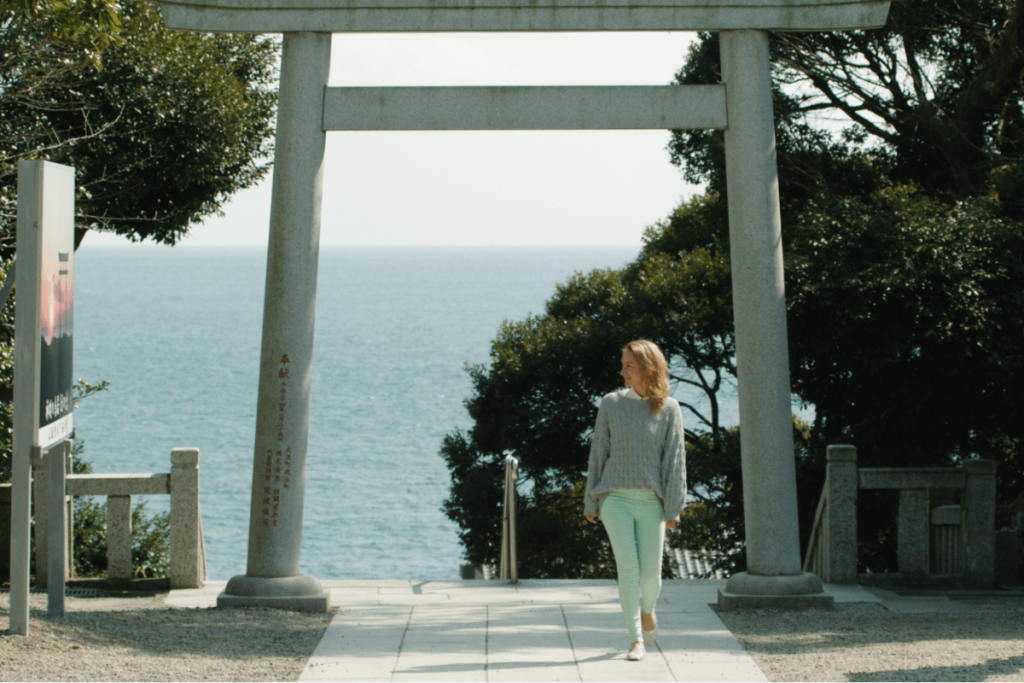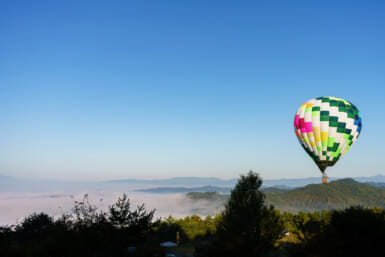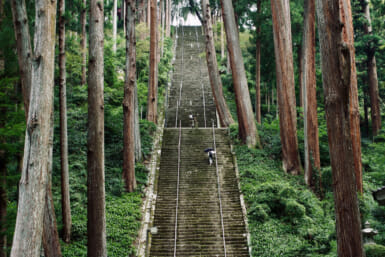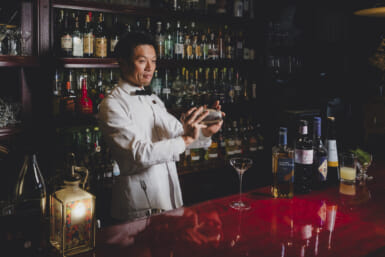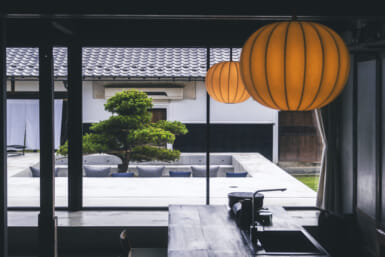Ibaraki remains largely unexplored by travelers, despite being readily accessible from Tokyo and boasting a plethora of cultural and scenic charms. Tours are an easy way to optimize your trip, focus on the essentials and learn directly from experts while sticking to what you are most interested in, whether it’s local crafts or delicious food. This selection of themed, curated itineraries across the length and breadth of the beautiful prefecture may inspire you to take a trip to this unsung jewel.
1. Learn About Ibaraki History and Culture
While not in your usual lineup of prefectures to visit for all things Japanese culture, Ibaraki does have a few great spots history buffs and travelers interested in traditional Japanese culture especially can check out.
Mito Tobukan, a revered kendo dojo, is where some of Japan’s top experts in the art of swordsmanship learned the ropes. Here you will see the artistry and discipline demonstrated before your eyes. After participating in this experience yourself, with no prior knowledge of kendo required, you will receive a certificate of completion to commemorate your time in the company of warriors.
At Kairakuen Garden, distinguished as one of the Three Great Gardens of Japan, you can indulge in a meal to remember. Kobuntei, a centuries-old residence and once a popular retreat for lords in the Edo Period (1603–1867) offers a one-of-a-kind dinner experience. Taste exquisite cuisine provided by Yamaguchi-Ro, a much-acclaimed local restaurant, and enjoy traditional art shows. If the season is right, wander the property and admire the nearby plum blossoms.
The Ushiku Daibutsu is one of Ibaraki’s most iconic landmarks and the tallest statue in Japan, towering over the tranquil landscape at a gargantuan 120 meters. Your guide will provide you with the best possible angles to take in its immensity. A beautiful flower garden rests at the statue’s base, allowing you the opportunity to appreciate both the splendor of nature and the craftsmanship of humanity.
2. Try Your Hand at Ibaraki Crafts
Crafts are always a great way to get to know an area. Ibaraki is home to a few experts that excel in creating beautiful objects from scratch, and many offer workshops where you can create something of your own.
Mito, Ibaraki’s picturesque capital city, has a long and proud history of manufacturing traditional paper lanterns. Suzumo Chochin has been in the business for decades and is considered to be one of the greatest sources of this delicate art form. Here you can try crafting your own elegant handheld lanterns that you can take home as a souvenir.
Nomura Fireworks Industry has been lighting up the night sky for over a century but did you know you can take a tour inside their factory led by an award-winning pyrotechnician? After seeing how the fireworks are made, take a trip to the nearby Naka River and witness a spectacular display firsthand. You can even press the button that ignites the show.
Komamura Seimeido has been in business as an incense workshop since the Meiji Period (1868–1912). Learn how to create incense sticks by grinding an assortment of raw materials using a water wheel. The strong aroma of the incense will tingle your nostrils as you search for the scent that resonates most with you.
3. Climb Ibaraki’s Best-known Mountain
To Tokyoites and residents of neighboring prefectures, Ibaraki is best known for its nature, more specifically its mountains. If you’ve been itching to reconnect with the wilderness, consider signing up for a hike or two and maybe a cycling tour.
Tsukuba Kasumigaura Ring Ring Road
Hop on a bike and ride along the Tsukuba Kasumigaura Ring Ring Road, taking in the glorious scenery of the Japanese countryside along the way. With a knowledgeable guide in tow who will reveal the details of the culture and history of the region, set off from the city of Tsuchiura to the foot of Mount Tsukuba.
Rest at a ryokan and soak in the welcoming waters of a natural onsen near the foot of Mount Tsukuba. As you unwind in the hot spring, take in a splendid view of unspoiled nature in a land that is seemingly untouched by the modern world. Afterward, settle down to a delicious multi-course meal prepared using freshly sourced seasonal ingredients.
After soaking in the springs, get ready to climb Mount Tsukuba yourself, once again in the company of a friendly guide with intimate knowledge of the local topography, but not before paying a visit to Tsukubasan Shrine. Tsukubasan Shrine is a much-loved place of Shinto worship situated on the mountainside. Once you make it to the summit, you’ll be greeted with a view to remember.

4. Taste Your Way Around Ibaraki Prefecture
In addition to history, crafts and nature, Ibaraki has an impressive list of local delicacies and locally produced food and condiments. For true foodies, there is no better way to discover the prefecture.
Sudo Honke Inc., established in 1141 and currently run by the 55th generation of the founding family, is the oldest sake brewery in Japan. Treat yourself to a delectable pairing of sake and local dishes. Even if you have no prior experience with sake, the atmosphere of unbroken historical tradition is bound to leave you thirsty for more.
Tuck into a premium dinner at Oarai Yamaguchirou, a sublime ryokan under the ownership of an acclaimed restaurant with its head branch in Mito. Watch in awe as the chef prepares mouthwatering dishes in front of you with practiced precision. If you’re lucky, you may also get the chance to taste some of Oarai’s local fishing catch.
Learn how to create miso, the ubiquitous Japanese fermented food, with an informative class held by Yamaichi Miso. This local business uses locally sourced soybeans and rice, and is one of the finest miso producers anywhere in Japan.
5. Experience Ibaraki’s Natural Resources Firsthand
Perhaps you’d like something that combines a few crafts and locally produced ingredients with just a touch of nature. Showcasing the various uses of Ibaraki’s precious resources, the following activities will give you a new appreciation for nature, water and food.
Hitoshi Kikuchi Architects
Allow a top-tier architect to guide you through the process of making a bench using Japanese cedar from the town of Ogo. Many local people from the surrounding communities also visit and you will be able to share in their passion for woodwork. The completed benches will be used in schools, hospitals and other public facilities.
Let a master of all things tofu explain the manyfold manifestations and benefits of soy. You will have the chance to make your yuba, a thin film of tofu made by boiling soy milk, which will then be a component of the lunch menu.
Considered one of the most beautiful waterfalls in Japan, this is a truly majestic sight to behold. Situated within the Okukuji Prefectural Nature Park, the waterfall stands 120 meters tall. The beauty of the waterfall takes on different forms with the shifting of the seasons, and each of its four incarnations is gorgeous in its own way.
Sponsored Post

